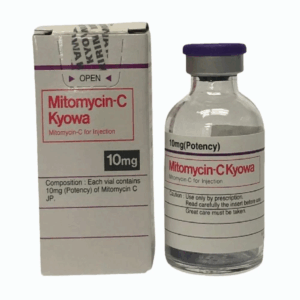Mitomycin-C 10mg Vial Product Description
Mitomycin-C is an antineoplastic agent derived from the bacterium Streptomyces caespitosus. It is primarily used in the treatment of various types of cancer, including bladder cancer, gastric cancer, and pancreatic cancer. Mitomycin-C works by inhibiting DNA synthesis, leading to cell death, particularly in rapidly dividing cancer cells. The drug is typically administered via injection and is known for its effectiveness in combination with other chemotherapy agents.
Uses of Mitomycin-C
- Bladder Cancer: Often used as a chemotherapy agent for superficial bladder tumors.
- Gastric Cancer: Utilized in combination with other drugs for advanced gastric cancer.
- Pancreatic Cancer: Sometimes included in treatment regimens for pancreatic malignancies.
- Other Cancers: May be used off-label for various other solid tumors.
Technical Data Details
| Parameter | Details |
|---|---|
| Active Ingredient | Mitomycin-C |
| Dosage Form | Injection (Vial) |
| Strength | 10 mg |
| Indications | Bladder cancer, gastric cancer, pancreatic cancer, and other malignancies |
| Mechanism of Action | Alkylating agent that inhibits DNA synthesis |
| Administration Route | Intravenous or intravesical injection |
| Storage Conditions | Store at room temperature, protect from light |
| Shelf Life | Typically 24 months from the date of manufacture |
| Side Effects | Nausea, vomiting, myelosuppression, renal toxicity, and pulmonary toxicity |
| Contraindications | Known hypersensitivity to mitomycin or any component of the formulation |
Key Points
- Administration: Mitomycin-C is administered by healthcare professionals, and dosage may vary based on the type of cancer and patient condition.
- Monitoring: Patients receiving Mitomycin-C should be monitored for side effects, particularly blood counts and renal function.
- Combination Therapy: Often used in conjunction with other chemotherapeutic agents to enhance efficacy.
Summary
Mitomycin-C 10mg is a potent chemotherapeutic agent with specific applications in treating various cancers. Its mechanism of action as an alkylating agent makes it effective in targeting rapidly dividing cells, although it comes with a risk of significant side effects that require careful monitoring.

